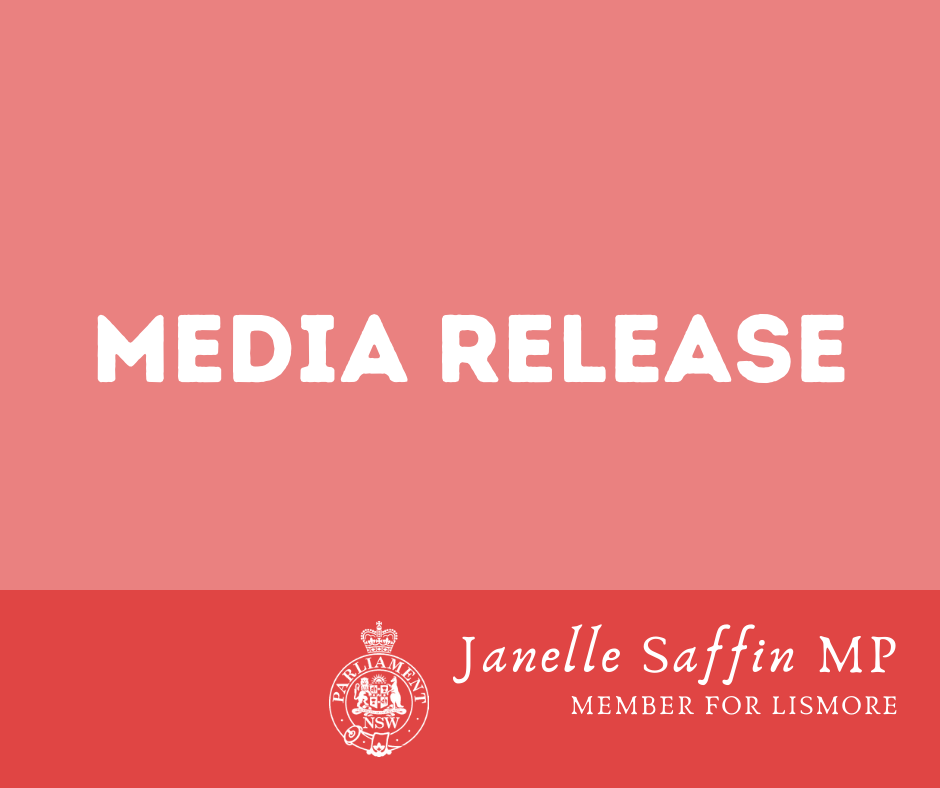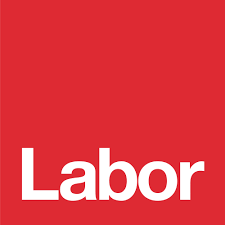LISMORE MP Janelle Saffin says thousands of flood-impacted local residents will be looking for much more than business as usual when the Northern Rivers Reconstruction Corporation stands up in the region from this Friday, July 1.
Ms Saffin says she hopes Corporation Chief Executive David Witherdin will outline an over-arching strategy to ‘build back better’ which is fully supported by commensurate State and Federal funding, and requisite and empathetic to local communities’ needs.
“The grants and approach to date, with a few adaptions, do not match the magnitude of the disaster that engulfed Lismore, Murwillumbah and other towns,” Ms Saffin said.
“I’ve made practical suggestions in a briefing note to NSW Premier Dominic Perrottet and new Federal Minister for Emergency Management Senator Murray Watt, pulling together my ‘advocacy asks’ since the February 28 flood hit us for six.
“At the very least, we must secure a joint NSW-Commonwealth Flood Reconstruction Package for the Northern Rivers. Guidelines and options need to be clear, flexible; the funding needs to be in the billions; and traumatised flood-survivors and locals need to be genuinely consulted and included in decisions impacting their futures.”
Ms Saffin today restates and shares some of the ideas she has put forward on how best to ‘build back better’, importantly informed by local community need.
Elements: Successive budget cycles commitment; voluntary house purchase/raising; land swaps; buybacks; relocations; increased Back Home grants for home owners/residential landlords with commercial landlords included; for tenants, an extension of the Flood Recovery Rental Support Program which expired on June 24; road, river, land and landslip support; serious and sustained mitigation measures (NSW commitment per the Productivity Commission recommendation to match CWTH); housing — (able to buy fixed assets from disaster funding), $7.5 million for Landcom-assessed Lismore projects to enable 66 flood-free townhouses, go beyond pods to more permanent structures, built-in flexibility for grants type and criteria, change the disaster ‘no betterment’ criteria to effect ‘build back better’, farmers to get specific help on their farms, the grant to be made more accessible, a housing response that matches need, on site and less costly but more suitable than what is on offer. For example, see the Rotary and BDC Global Group ‘pop up’ homes.
Frame: ‘Build back better’ must be the frame for recovery, reconstruction physical, economic, emotional and environmental. 3600 Northern Rivers homes deemed uninhabitable (March 2022), thousands of inundated businesses, Lismore: 3,000 businesses impacted, 18,000 jobs impacted, nearly 1,400 houses sustained major damage, 37 homes completely.
Preparedness-Adaptation: Resilience NSW to be superseded by establishing a NSW Reconstruction Authority, similar to the Queensland Reconstruction Authority, have a package of grants and options ready before, not after the disaster and make the Northern Rivers the model for adaptation with mitigation and other measures.
Immediate humanitarian need – heating for winter: Coldest start to winter since the 1930s, flood-affected residents are cold.
CWTH/NSW ‘Build Back Better’ Reconstruction Package: A ‘build back better’ package 50:50. Everyone should be allowed to undertake betterment works, not be shackled by restrictive like-for-like replacement, such as for local councils repairing critical infrastructure. State needs to be able to use disaster funding to buy assets such as housing for flood-impacted households.
I have strongly advocated for a Northern Rivers version of the $741-million CWTH/QLD Resilient Residential Recovery Package, (requires a larger amount here) that has since March 2022 provided flood-affected Queensland homeowners with options including retrofitting, house raising and voluntary buy-back of homes at high risk from future floods. Queensland scaled up Category A Structural Assistance Grants ($14,684 to $50,000). NSW Back Home Grant needs to be scaled up for all.
Commercial landlords and business structures eligibility: Targeted support packages for commercial landlords, who are not eligible for grants, to stand up buildings so businesses can reopen. Some own buildings in SMSF — grant eligibility needs to be blind as to business structure. Private medical clinics such as GPs and specialist ones to be viewed as essential services for grant eligibility.
Employment and Economic support: Consider a tailored employment and economic development program. Northern Rivers RDA and the Regional NSW Business Chamber are ideally placed.
Rental support: NSW Labor has called for an extension of the Flood Recovery Support Program, which ran out on June 24, 2022. After 16 weeks, only 1,937 (16.5 per cent) of over 11,700 people who applied have received any support. The program has paid out $17.7 million, or just 7.1 per cent out of $248 million available.
Mitigation and Resilience Resources for Disaster Ready: 2014 Productivity Commission’s review of natural disaster funding found governments’ expenditure on resilience measures low and governments’ expenditure post-disaster reconstruction high. It recommended Federal Government commit to pre-disaster resilience works of $200 million (they have) and states and territories to match it. Mitigation must be at the heart of ‘build back better’. Government’s human security obligation demands it — it is inextricably linked to affordable-accessible insurance and now the CSIRO study. The extra funding committed to the study is welcome, but it must be clear in scope and approach before it feeds into the overall mitigation measures and must consider what works in other places, Netherlands, etc. – An MOU among CWTH/State/Local governments to provide proper funding for priority flood mitigation projects already identified across the three catchments.
Flood reinsurance scheme Northern Rivers: Prior to the Federal election, I asked NSW Treasurer Matt Kean to urgently take up the issue with his counterpart. It is a point of entry and discussion. The jury is out on the CWTH government-backed Northern Australia Cyclone Reinsurance Pool–backed by a $10-million government guarantee. The future of insurance for our region and mitigation efforts are key to reconstruction.
National Building Code: It contains three core principles, health and safety, amenity and accessibility and sustainability, but nothing on resilience which better speaks to flood resistant or flood ready. (See QRA’s Flood Resilient Building) The NRCC must issue a good guidance note ASAP.
Rivers clean-up/river health: Further clean-up of our rivers, contaminated by flood debris and sewage, cannot wait. An Environmental Recovery Package could fund this across the Richmond, Tweed and Clarence river catchments. (There is a joint $64 million for riparian restoration-no detail) See the NRJO’s Northern Rivers Watershed Initiative (NRWI) — a $150-million strategy over the next decade to enhance river health systems (some currently ranked D- and F).
Roads: Roads are subject to the no betterment clause under disaster management grants and that must change. The up to 15,000 kilometre take back of regional roads has to happen. Landslips: Landslips have severely disrupted everyday life for many residents, including local farmers who in some cases have had their access to farmland cut. Landslip repair has to be factored into recovery and reconstruction as programs roll out to repair roads, bridges and fencing.
BOM/SES flood forecasting, warnings, evacuation orders, SES: There is no faith in the BOM/SES flood forecasting and warning system. A review is not required but a fix is. We are told that agreements between the CWTH and State require the BOM to issue flood warnings. This has been harmful to community. It is currently untimely, contradictory and confusing and too late and river gauges need to be in the right places, functioning, subject to proper maintenance, and a responsible agency. Early Flood Alert systems: There is solid financial modelling that demonstrates the economic benefits of early flood warning. I know this because I like many others seek other sources. For example, the European Centre for Medium-Range Weather Forecasts and other local knowledgeable people.
Review of off-farm income criteria and grants: The unfair off-farm income rule – farmers are ineligible if they make more than 50 per cent of their income off farm – does not recognise that it is common place for one partner to be working off farm so that they can farm! Secondly, at least half of the $75,000 primary producer grant should be available up front so farmers can get access to the funds they need to get going. Ideally, all grants should be available up front so that people do not have to become more indebted and some cannot.

